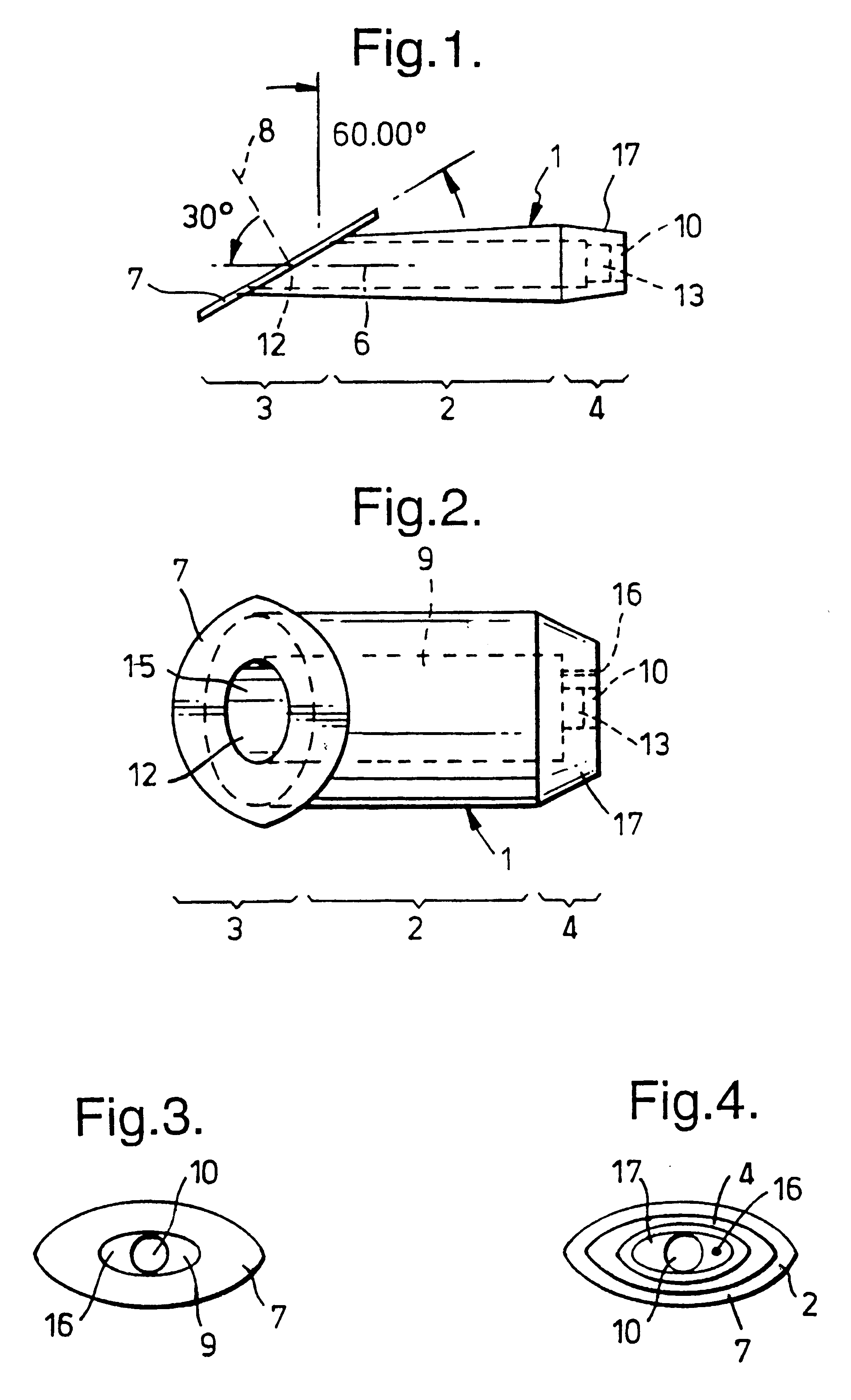Device for use in the eye
a technology for eye devices and eyelids, applied in eye surgery, eye treatment, suction devices, etc., can solve the problems of excessive drainage, early postoperative hypotony, poor control of flow through,
- Summary
- Abstract
- Description
- Claims
- Application Information
AI Technical Summary
Benefits of technology
Problems solved by technology
Method used
Image
Examples
Embodiment Construction
The present inventor determines that it would be desirable for a device to be provided which allows a predetermined flow rate of intraocular fluid through the device whilst minimising flow through the incision around the outside of the device and preferably allows for adjustment of the flow rate after implantation.
A new device according to the invention for positioning in a slit aperture in the eye of a human or animal patient for relieving glaucoma comprises an elongate body section, interior and exterior end sections at the respective interior and exterior ends of the body section, and at least one lumen extending through the body between the interior and exterior ends thereof, and the exterior end section preferably has a channel one end of which has a mouth which opens to the outside of the device (i.e. in said other cavity) and the other end of which is in fluid communication with at least one of the said at least one lumen, the interior end section has a passageway one end of ...
PUM
| Property | Measurement | Unit |
|---|---|---|
| Luminous flux | aaaaa | aaaaa |
| Pressure | aaaaa | aaaaa |
| Angle | aaaaa | aaaaa |
Abstract
Description
Claims
Application Information
 Login to View More
Login to View More - R&D
- Intellectual Property
- Life Sciences
- Materials
- Tech Scout
- Unparalleled Data Quality
- Higher Quality Content
- 60% Fewer Hallucinations
Browse by: Latest US Patents, China's latest patents, Technical Efficacy Thesaurus, Application Domain, Technology Topic, Popular Technical Reports.
© 2025 PatSnap. All rights reserved.Legal|Privacy policy|Modern Slavery Act Transparency Statement|Sitemap|About US| Contact US: help@patsnap.com



